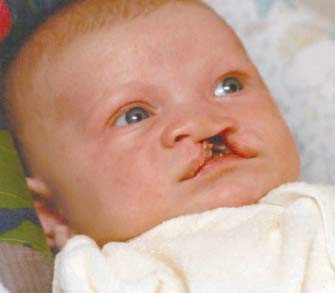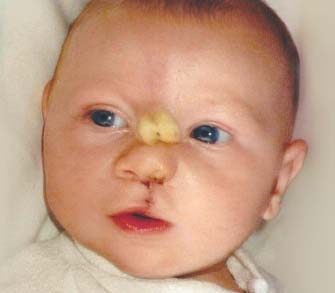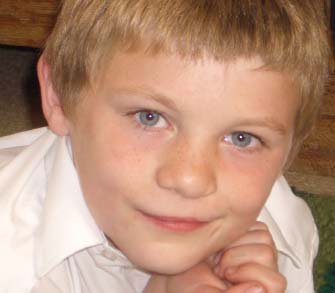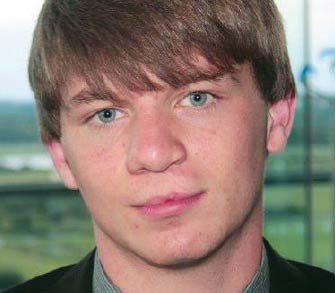Cleft Lip & Cleft Palate
Common Birth Defects That Can Be Repaired Beautifully by Skilled Surgeons
(Continued)
How Are Clefts Repaired?
Cleft repair was a long-standing puzzle finally solved by Dr. Ralph Millard, a Harvard-trained U.S. Navy surgeon who made a conceptual breakthrough in 1950 while stationed in Korea. He had dozed off one evening with photographs of cleft patients spread before him. Upon waking, he focused by chance on an askew picture that made him realize the tissue required for a good-looking cleft repair was in fact present albeit distorted. He saw that all he had to do was release the tissue of the lip and “move what is normal into a normal position.” The surgical technique he developed formed the basis of modern cleft-repair surgery.
 |
| Harry at one month old with a complete, bilateral cleft lip. |
 |
| Cleft lip repair surgery was performed at 3 months of age. |
 |
| Harry at age 9 is an outstanding example of cleft lip repair. |
 |
| Harry at age 16 is a fully functioning, attractive and confident person. |
| Grateful acknowledgement is made to the Cleft Lip & Palate Association (CLAPA) for permission to use the patient photographs accompanying this article. |
Nowadays, skilled surgical teams can treat clefts with techniques that literally bridge these gaps — and this truly is where artistry and science meet. The repair is typically done in stages that involve several surgeries over months or even years. Repair of the lip usually occurs at 3–6 months of age, followed by repair of the palate at 6–12 months. Secondary cleft surgery may be necessary in subsequent years to refine these earlier surgeries.
Traditional dentistry plays a large role in cleft palate repair. Members of the cleft team may include a maxillofacial (oral) surgeon, an orthodontist, and a general dentist.
The general dentist is central at all stages, initially to support the patient and family and then to maintain dental health, preventing decay in these vulnerable children. Later, the dentist will create and maintain an excellent occlusion (bite) with any necessary prostheses, including implants or crown and bridgework, if necessary. The dentist’s long-term care of the child’s teeth and the supporting periodontal (gum) tissues is crucial.
All’s Well That Ends Well
The sense of wonder that we all have for the myriad intricate mechanisms that allow development of a healthy baby unfortunately will not diminish the grief and fear experienced by parents on being confronted with a child whose appearance is so different from what had been hoped for and expected when facial clefts occur.
It is a tribute to the strength of parents, the support of family and friends, and the skills of the child’s team of dental/surgical professionals that this apparently catastrophic condition can be treated successfully and the child develop into a fully functioning, aesthetically pleasing and confident person.



